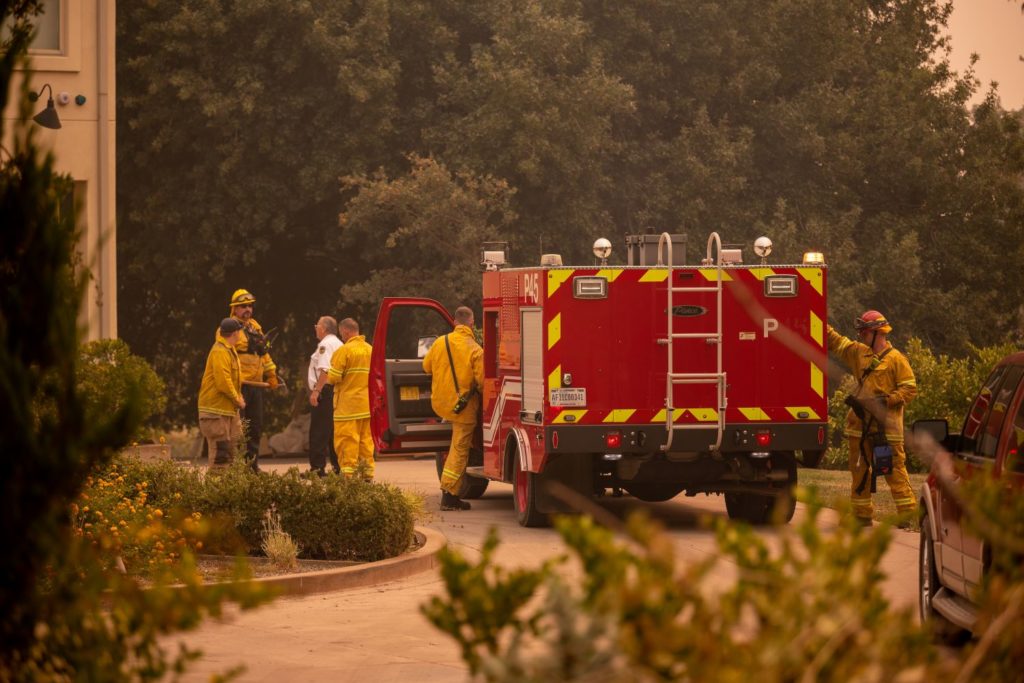 View Winners →
View Winners → California Secures Federal Disaster Declaration in Response to Wildfires


Firefighters from the 60th Civil Engineer Squadron and the Vacaville Fire Protection District prepare to contain a fire near a residence on Gibson Canyon Road in Vacaville, California, Aug. 20, 2020. The 60th CES firefighters aided local fire departments in fighting the LNU Lightning Complex Fire, a cluster of fires that forced tens of thousands of people to evacuate their homes. – Courtesy photo by Nicholas Pilch, U.S. Air Force
Governor Gavin Newsom announced Saturday that the White House had approved California’s request for a Presidential Major Disaster Declaration to bolster the state’s emergency response to wildfires burning in Northern California and support impacted residents in Lake, Napa, San Mateo, Santa Cruz, Solano, Sonoma and Yolo counties.
“Thank you to the president for your partnership and granting this urgent Major Disaster Declaration. California is battling two of the largest fires in our history and has seen nearly 600 new fires in the last week caused by dry lightning strikes. These are unprecedented times and conditions, but California is strong – we will get through this,” said Newsom.
A statement issued by the governor’s office says, “The declaration helps people in the impacted counties through eligibility for support including crisis counseling, housing and unemployment assistance and legal services. It also provides federal assistance to help state, tribal and local governments fund emergency response, recovery and protective measures.”
The governor has declared a statewide emergency due to the widespread fires and extreme weather conditions and activated the State Operations Center to its highest level. California has also secured Fire Management Assistance Grants from the Federal Emergency Management Agency (FEMA) to support the state’s response to various fires burning in Santa Clara, Stanislaus, Santa Cruz, San Mateo Napa, Nevada, Lake, Solano, Yolo and Monterey counties.
Though all the assistance is welcome, California still faces an uphill battle as it contends with deadly wildfires that have burned over 1 million acres, a heat wave, a diminished state budget, and a pandemic complicating it all.
Cal Fire has deployed 13,700 firefighters and is asking for more personnel. The governor last month announced that the state would hire 858 more firefighters and six California Conservation Corps (CCC) crews through October and he is now requesting crews from as far as the East Coast and Australia. There are already 15 crews from Washington in the state helping exhausted California crews and more firefighters are expected from the Michigan Department of Natural Resources and New Mexico. Frontline California crews are also getting help with aircraft from 10 states, the National Guard and U.S. military. Cal Fire has even issued protective gear to 270 California National Guard soldiers who are beginning hand crew training at Camp Robert to supplement state agencies currently battling fires.
But the state also heavily relies on inmate labor to fight fires, a source depleted by COVID-19 outbreaks in prisons and early-release policies meant to minimize and prevent those outbreaks. The California Department of Correction and Rehabilitation told KTVU that approximately 330 inmate firefighters were released, though the agency “could not break down how many were natural releases versus expedited ones.” According to The New York Times, “Over all, the state has the capacity to train and house about 3,400 inmate firefighters. Only 1,306 inmates are currently deployed.”
L.N.U. Lightning Complex and the S.C.U. Lightning Complex fires have become the second- and third-largest fires in state history.






































































































